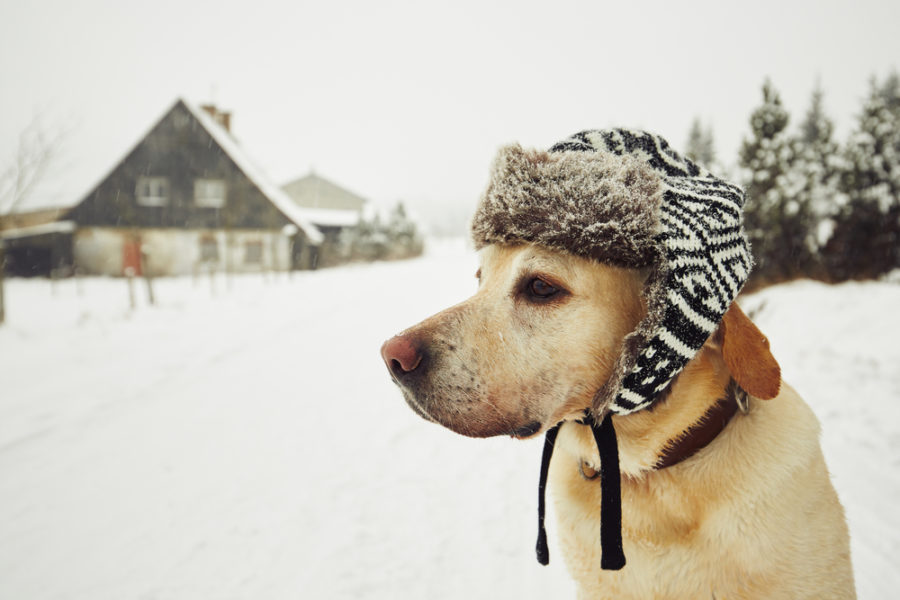Those of us who live in a warmer climate need never worry about the dangers of frigid temperatures for our animals. If you live in a more northern area, however, dangers like frostbite and hypothermia are very serious threats.
It is a misconception to believe that cats and dogs can withstand cold temperatures because they have fur. Small-breed dogs, in particular, are more sensitive and have no tolerance for the cold, and can easily suffer from ailments like frostbite and hypothermia. Providing them with a coat and boots is a smart move. Boots are doubly important if your area uses salt on the sidewalks. Otherwise, you’ll need to rinse the salt from your dog’s feet when you return.
Cats don’t usually stay outdoors long when it’s very cold. Make a note of the upcoming forecast before letting your cat out, and if you are not going to be home to let your cat back into the house, it’s better that he stays in. Leaving cats – or dogs – outside in cold temperatures could cost them their lives.
Frostbite
When dogs or cats are exposed to extreme temperatures, their bodies react in the following ways as they get progressively colder:
- Their hairs stand straight up and trap and warm the cold air.
- They shiver to generate heat.
- The body becomes selective in where it sends the blood, which continues to circulate only in the vital organs. Frostbite will appear on the ears, tail, face, footpads, legs and genitalia (of male dogs).
Watch for…
- Cold, icy body and limbs
- Shivering
- Skin that is bright red, pale and/or black
First aid
- Do not rub or massage the frozen tissue.
- Do not apply ice or snow.
- Do not immerse the animal in a bath.
- Warm the affected area with warm water, using wet towels.
- If a limb or paw is frozen, soak it in warm water.
- Dry the area gently after you have warmed it
- Wrap the animal in a blanket to keep him warm and to prevent him from aggravating the affected area that may be painful as it warms up.
- Seek veterinary care. Secondary infections may result from gangrenous tissues.
Hypothermia
Hypothermia is an abnormal lowering of the body’s temperature and may cause unconsciousness, shock and death.
Watch for…
- Body temperature below 37.5 degrees
- Shivering
- Weakness
First aid
- Warm the animal using: blankets; plastic bottle filled with warm water or a heating pad wrapped in towels (to prevent burns); ziplocked bag of uncooked rice warmed for one to two minutes in the microwave then wrapped in a towel; or a hair dryer set at medium warm.
- Monitor the temperature every 10-15 minutes and stop warming once the temperature is back to normal.
- Seek veterinary care. Kidney and bladder problems may occur.
Frolicking in the snow with your animal companion can be great fun. Use the information above and your common sense to make sure your winter is a safe one.







